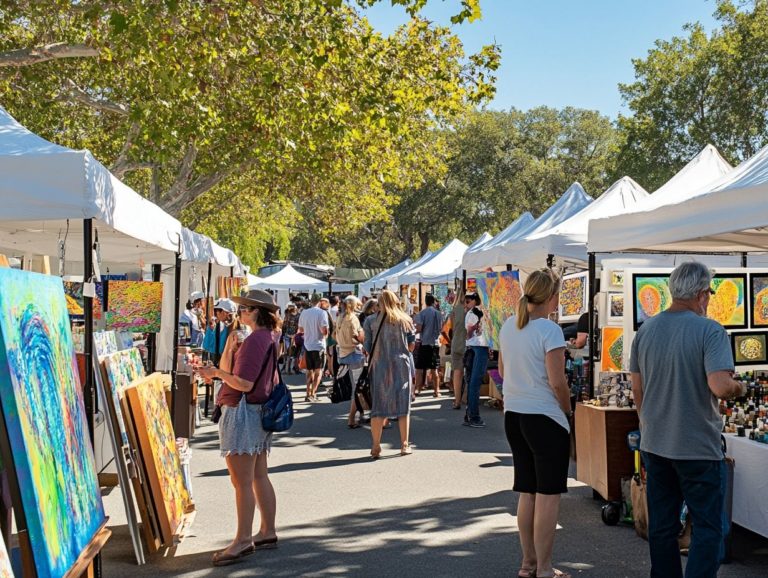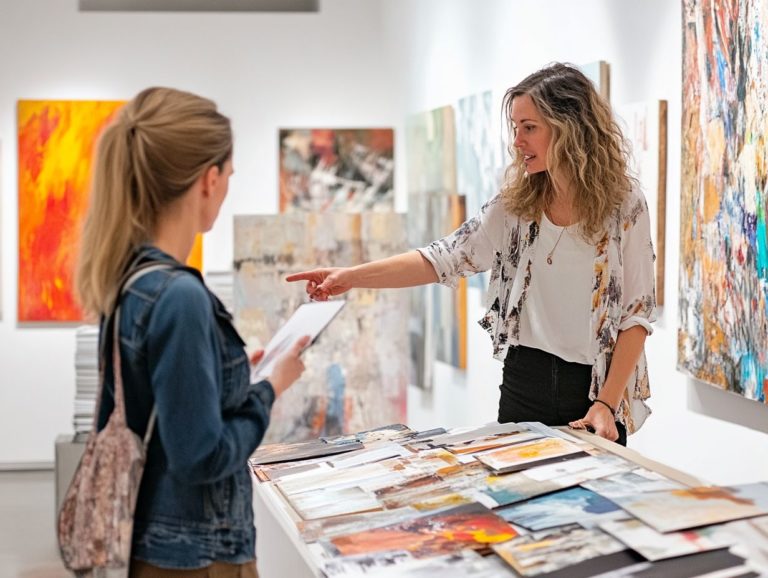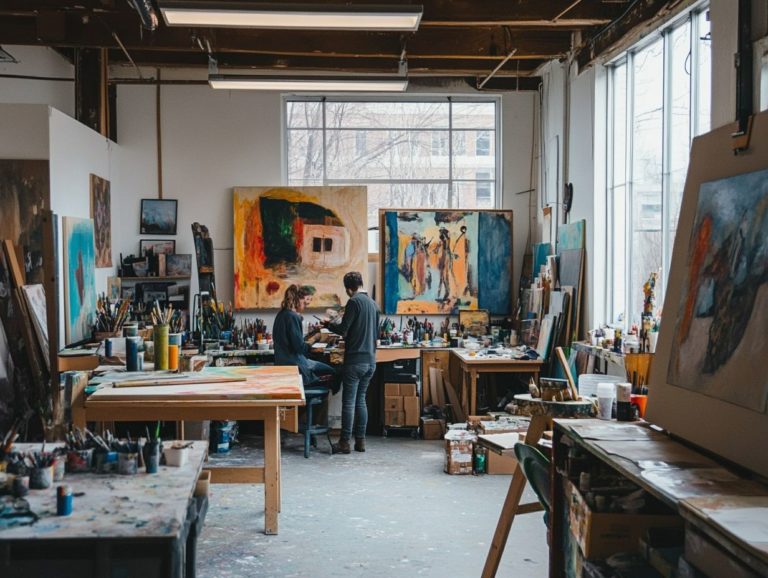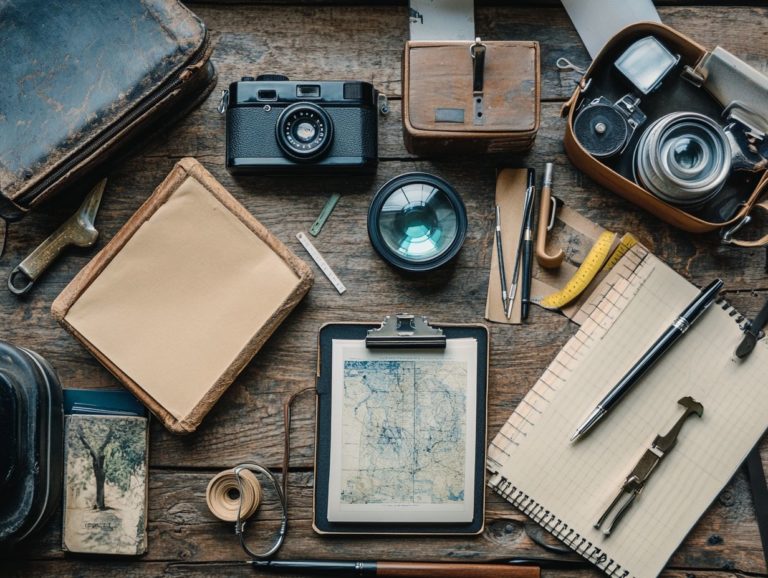Collectibles and Art: A Beginner’s Guide
Collecting is an exhilarating journey. It offers a unique glimpse into history, culture, and your personal passions.
From rare coins and vintage toys to contemporary art pieces, the realm of collectibles and art is both vast and diverse. This guide is designed specifically for beginners, delving into the different types of collectibles, how to embark on your collection, and essential insights into the art market.
Explore best practices for buying, selling, and preserving your treasures. Ensure that your collection not only survives but flourishes for years to come.
Contents
Key Takeaways:
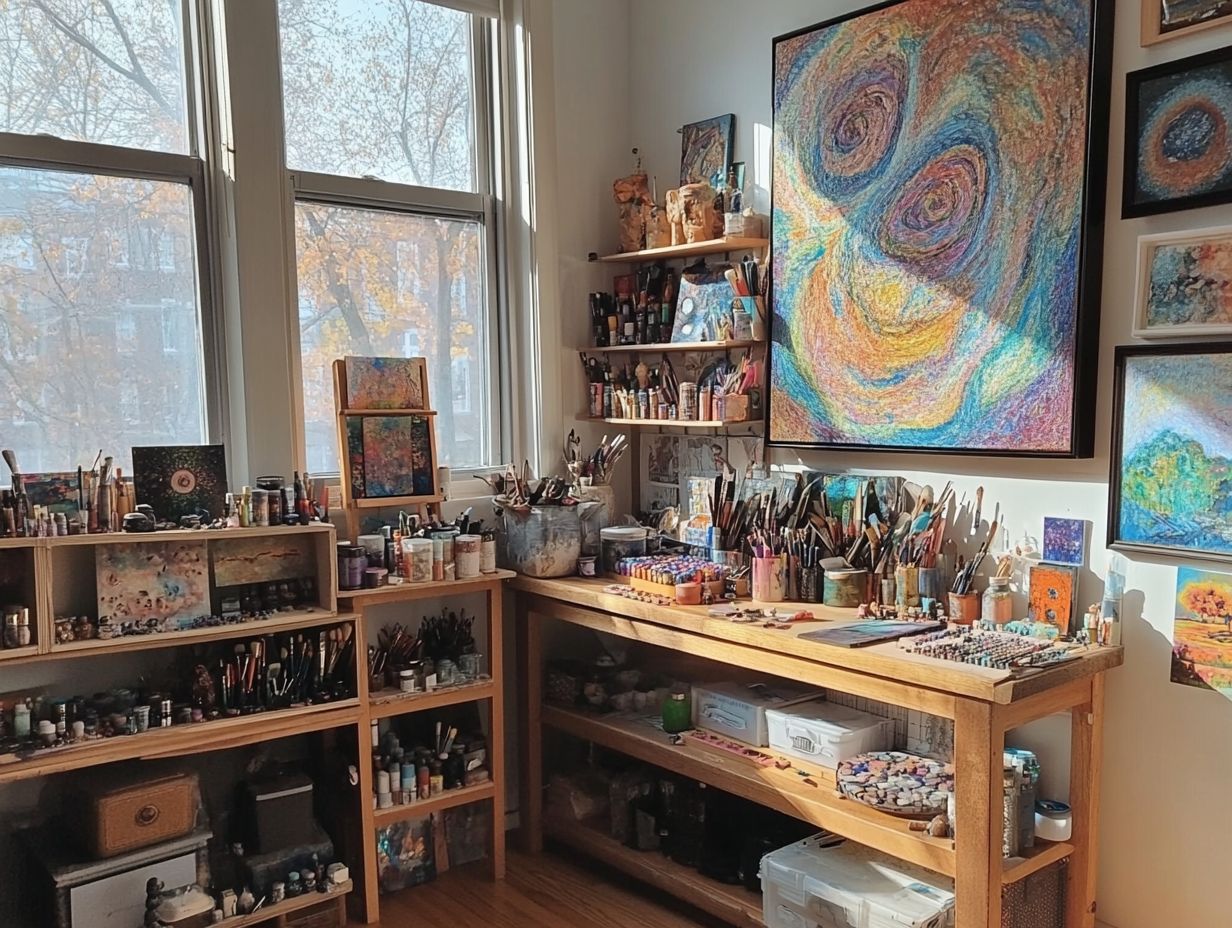
- Start with what interests you when collecting art and collectibles. It will make the process more enjoyable and rewarding.
- Research and educate yourself on different types of collectibles and the art market to make informed decisions on buying and selling.
- Proper preservation and display techniques are crucial in maintaining the value and condition of your collection.
- Take the time to store and display your items correctly.
What are Collectibles and Art?
Collectibles and art represent a vibrant intersection of creativity, investment, and personal expression. When you delve into the world of art collecting, you encounter various forms, including paintings, sculptures, and decorative pieces, each imbued with its own unique significance and value. For those interested in this fascinating market, exploring investing in art: strategies for beginners can provide valuable insights.
These items not only mirror art history but also serve as tangible assets within the art market, drawing in both enthusiasts and investors alike. Whether you find yourself captivated by original works or emerging artists, understanding collecting limited edition prints is essential for enhancing your collection.
The realm of art offers an extensive array of styles, such as abstract, impressionism, and contemporary. Each style can profoundly influence your choices as a collector. Personal taste, emotional connections, and historical context often guide your collection, shaping it into a reflection of your identity.
Notable collectors like Steve Cohen and Eli Broad exemplify how curated collections can embody both personal passion and investment acumen.
Engaging with the art community by attending exhibitions or joining collector groups allows you to gain invaluable insights into evolving trends and discover new artists worth investing in. Every art piece tells a story, making the journey of collecting as meaningful as the collection itself.
Types of Collectibles
The realm of collectibles is vast and varied, offering a rich tapestry of categories that cater to both aesthetic appreciation and investment potential.
When you delve into art collecting, you might seek rare and valuable pieces, such as limited edition prints from celebrated artists. To get started, consider checking out this guide on how to start a collectible art portfolio. You may also explore more mainstream categories that resonate with a broader audience, including contemporary art, photography, and decorative art.
Grasping the intricacies of each category is crucial for anyone aiming to cultivate a discerning and valuable personal collection.
Rare and Valuable Collectibles
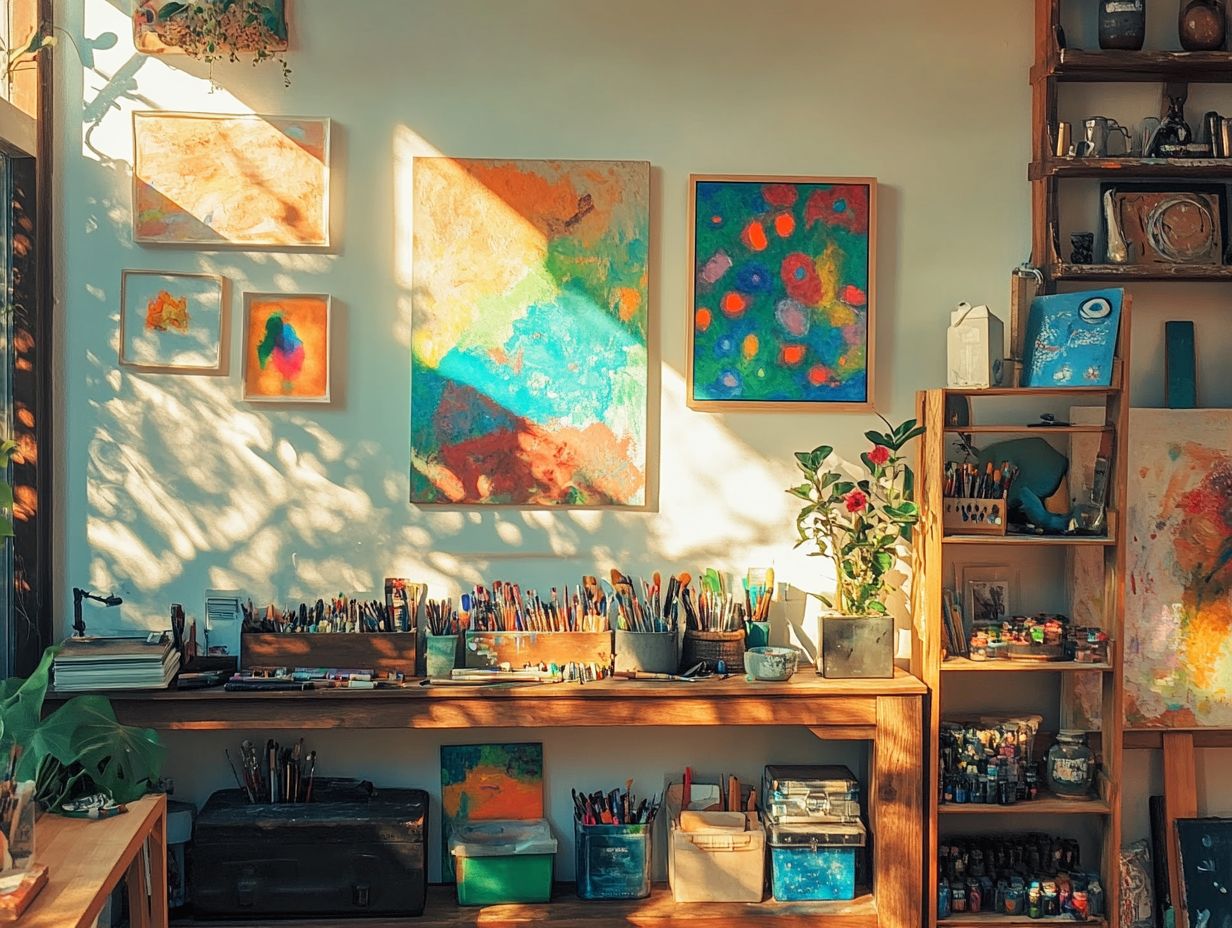
Rare and valuable collectibles, especially in the art world, offer significant investment potential, blending aesthetic pleasure with financial gain.
The worth of these pieces is shaped by several crucial factors, particularly their ownership history, condition, and the artist s reputation. For example, a work with a well-documented history can command much higher prices at auctions than one without such a narrative.
The artwork s condition its physical state and any restoration work also plays a vital role in determining its market value. The artist’s standing, as reflected in past sales and critical acclaim, profoundly influences the desirability of their work.
Investing in pieces from artists renowned for their unique contributions, such as Jean-Michel Basquiat or Yayoi Kusama, can prove to be a wise choice over time.
Astute investors often plan their acquisitions around prestigious art events, using this knowledge to build a collection that captivates the eye and appreciates considerably in value.
Popular Categories of Collectibles
Contemporary and decorative art are among the most sought-after collectibles. Whether you’re a beginner or an expert, these categories offer a wide array of pieces that let you express your unique tastes. If you’re interested in exploring more, check out this guide on how to get started with collectibles.
This fascination stems from the vast array of art pieces available, each spanning diverse styles and mediums, allowing you to make a savvy investment in the art market.
You might find yourself drawn to works by emerging artists showcased at art fairs and galleries. Here, aesthetic enjoyment seamlessly intertwines with financial strategy.
As trends evolve, these categories reflect not only current artistic movements but also resonate deeply with societal values. They address pressing themes such as sustainability and diversity.
For instance, decorative art pieces crafted from recycled materials showcase environmental consciousness. Contemporary works often challenge traditional norms to promote inclusivity.
This synergy between your personal passion and global issues enhances the allure of collecting. Your choices contribute to meaningful dialogues within the cultural landscape.
Both seasoned collectors and newcomers are captivated by artworks that enrich their spaces and tell compelling stories about our world.
How to Start Collecting
Embarking on your art collecting journey may seem daunting, but with the right strategy and resources, such as knowing how to spot fake art, it transforms into a rewarding endeavor.
Setting a budget is essential; it enables you to explore the vast array of art pieces at your disposal, from original works to prints by up-and-coming artists.
Collaborating with an art advisor can offer you invaluable insights and open doors to exclusive art fairs and galleries. This ensures that every decision you make along this path is well-informed and aligned with your vision.
Tips for Beginners

If you’re new to art collecting, understanding the landscape is crucial. Focus on emerging artists to discover unique talents.
Explore art fairs for a variety of styles. Networking within the art community can help you connect with other collectors.
These strategies can enrich your appreciation of art while helping you cultivate a collection that reflects your personal tastes.
Investing time in researching artists is vital. Utilize online platforms, social media, and portfolio websites to uncover fascinating stories behind various artworks.
Attending local exhibitions allows you to experience new pieces up close and engage directly with the artists. This further enriches your collecting journey.
Effective budget management is also essential. Aim to acquire artwork that comfortably fits within your financial parameters. Keep in mind not just the initial purchase price but also potential future costs like framing or insurance.
By embracing these practices, you can develop a discerning eye and make thoughtful acquisitions that resonate with your artistic vision.
Understanding the Art Market
Grasping the details of the art market is essential for anyone aiming to invest wisely or curate a remarkable collection. The dynamics at play are shaped by various factors that impact art prices, from prevailing trends and artist reputations to broader economic conditions.
Your ability to recognize these influences will enable you to make informed purchasing decisions that resonate with your investment aspirations, particularly in a landscape featuring both renowned artists and promising newcomers.
Start your collection today and find pieces that inspire you!
Factors Affecting Art Prices
Several key factors influence art prices in the dynamic art market, playing a pivotal role in your investment decisions as an art collector. These elements include the artist’s reputation, the rarity of the artwork, its historical significance, and current market trends each capable of significantly impacting a piece’s value.
By understanding these influences, you can make more strategic acquisitions. This insight will help you cultivate a more impressive personal collection.
The condition of the artwork is paramount. A well-preserved piece can command significantly higher prices than one displaying signs of wear.
Examining auction results of similar works provides crucial insights, as recent sales often establish new benchmarks in the market.
For example, artworks by emerging artists may appreciate more rapidly than those by established figures, presenting alluring opportunities for collectors seeking future returns.
Grasping these nuances not only enables you to make informed purchasing decisions. It also enhances the overall aesthetic and financial value of your collection.
Buying and Selling Collectibles and Art
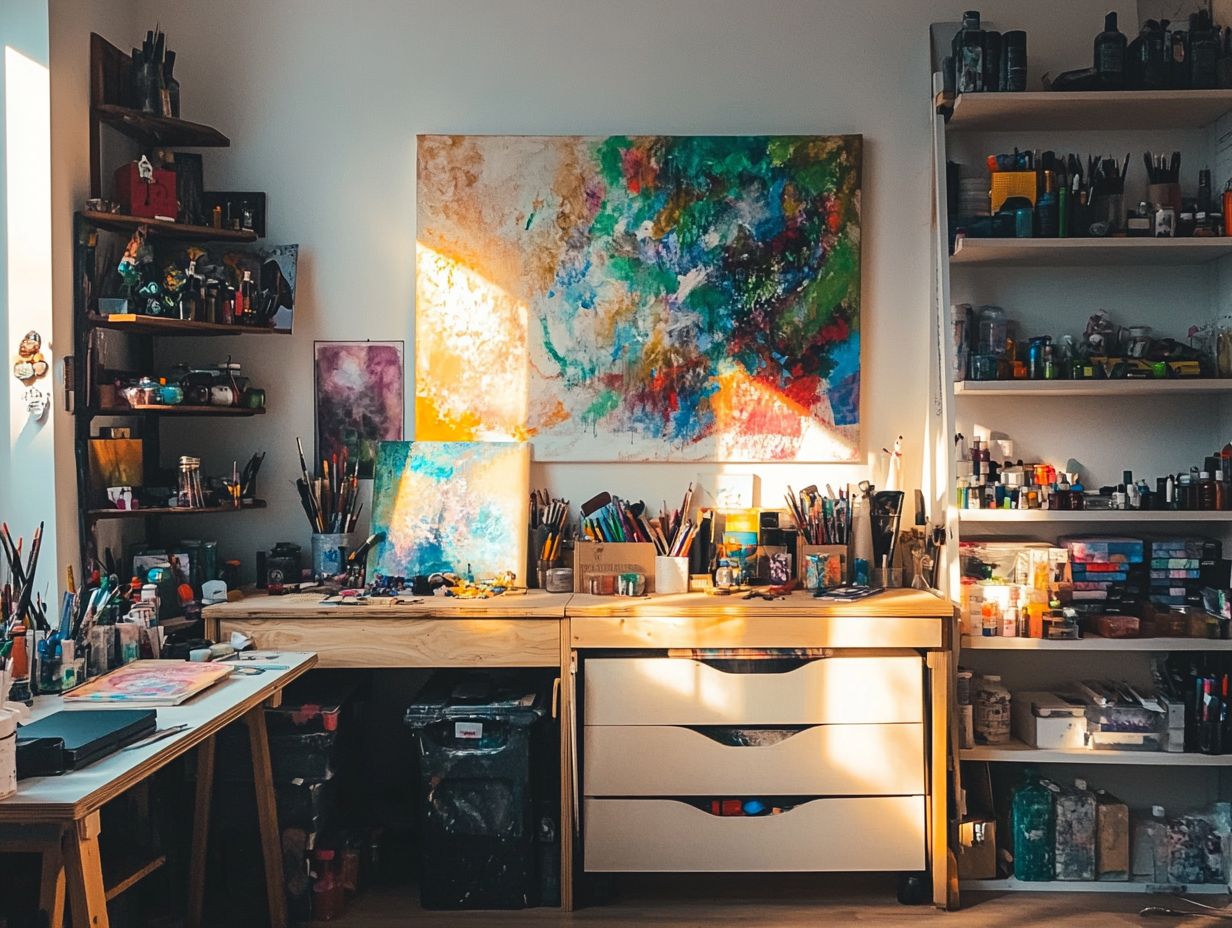
Navigating the buying and selling of collectibles and art demands a blend of strategy and a nuanced understanding of the art market, along with some top art collecting tips for beginners.
For art collectors like you, effective practices begin with meticulous research on potential acquisitions. Leveraging reputable platforms such as Christie s or Sotheby s is essential. Employ strategies that account for market trends when selling pieces from your personal collection.
This thoughtful approach empowers both new and experienced collectors to optimize their investments while truly savoring the art they obtain.
Best Practices and Strategies
Employing best practices and strategies in acquiring and selling art can significantly elevate your success in the art market. When buying art, it s crucial to verify authenticity, understand market trends, and engage with knowledgeable art advisors who can expertly guide your decisions.
On the selling side, being transparent about the history and condition fosters trust. This ensures you maximize your investment while nurturing valuable relationships within the art community.
This approach not only enables you to make informed choices but also strengthens your connections within the industry. Collaborating with reputable galleries can unveil insights into emerging artists, while market analysis tools assist in tracking fluctuations and forecasting future values.
Cultivating strong relationships with advisors can open doors to exclusive opportunities and provide tailored advice, enhancing your buying and selling experiences.
Utilizing digital platforms for showcasing art and networking significantly boosts your visibility. This allows you to navigate the complexities of the art market with increased confidence and success.
Preserving and Displaying Your Collection
Preserving and showcasing your art collection is vital for maintaining its value and ensuring that every piece is presented in the best possible light.
Use smart storage techniques to protect your art from environmental damage.
Moreover, thoughtful display methods not only honor your personal collection but also transform your home or gallery space into a celebration of your passion for art and your dedication to preserving history.
Conclusion: Understanding art prices and the buying and selling process is crucial for any collector. Equip yourself with knowledge and strategies to navigate the art market effectively, ensuring the best outcomes for your collection.
Proper Storage and Display Techniques
Implementing proper storage and display techniques is essential for ensuring the longevity and beauty of your art pieces. This means using safe storage materials, maintaining ideal humidity and temperature levels, and employing display methods that enhance visual appeal while safeguarding the artwork.
For instance, using mats that are free of harmful acids and glass that blocks UV rays can prevent damage from light exposure and pollutants. Consider investing in climate-controlled display cases. These provide strong protection and create an engaging viewing experience for anyone who admires your collection.
Position your artwork away from direct sunlight and heat sources to support optimal preservation. Selecting the right frame and ensuring enough space around each piece can elevate the aesthetic value, inviting admirers to explore the intricate details and craftsmanship.
Act now to protect your treasures! Paying attention to these methods can significantly prolong the lifespan and integrity of your cherished art pieces.
Frequently Asked Questions
What are collectibles and art?
Collectibles and art refer to items that are valued and sought after by collectors and enthusiasts. These can include a wide range of items such as paintings, sculptures, coins, stamps, figurines, and more, making it essential to grasp understanding the art market for informed collecting.
Why should I start collecting?
Collecting allows you to appreciate and gain a deeper understanding of a specific type of art or item. It also lets you own pieces that hold personal or historical significance.
How do I identify valuable collectibles and art?
Research is key in identifying valuable collectibles and art. Look for markings, signatures, and other identifying features on the item. You can consult with experts or use price guides to help determine value.
Where can I find collectibles and art to add to my collection?
There are many places to find collectibles and art, such as online marketplaces, antique stores, auctions, and art galleries. Attending collector conventions and fairs can also lead you to unique collectibles beyond traditional art pieces.
How should I care for and preserve my collectibles and art?
Proper care and preservation are crucial for maintaining the value and condition of your collectibles and art. Keep them away from direct sunlight, moisture, and extreme temperatures. Use safe storage materials and consider getting them professionally appraised and insured.
Is collecting expensive?
The cost of collecting varies depending on the item and its rarity. Some items may be affordable, while others can be quite expensive. It’s essential to set a budget and prioritize items that you truly value and can afford.
Start your collection journey today! Protect your artwork now for lasting beauty!


